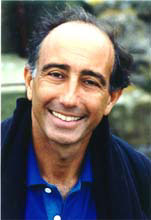 We all age, but the deterioration associated with aging (called, senescence) is partly under our control. Senescence is speeded up by toxicity and our bodies' response to it.
We all age, but the deterioration associated with aging (called, senescence) is partly under our control. Senescence is speeded up by toxicity and our bodies' response to it.
The human body has many natural defenses against environmental toxicity. These include the constant shedding of the skin and the lining of the gastrointestinal tract, which slowly dispels environmental and intestinal toxins from the body; the activity of protective immune responses which limit the attachment of toxins to the surfaces of the lungs or the gastrointestinal tract; enzyme systems in the liver which destroy toxins and prepare them for excretion in the bile or the urine; enzymes which repair damaged cells and promote healing.
The idea that the intestines constitute an endogenous source of toxicity is as old as the practice of medicine. Intestinal bacteria constitute a powerful chemical factory, producing toxins and anti-toxins and altering the chemical composition of foods and drugs. The beneficial bacteria which normally predominate in the large intestine are called Bifidobacteria. Their growth is strongly affected by diet. Bifidobacteria thrive on vegetable fibre and on the complex sugars known as fructooligosaccharides (FOS), which are especially concentrated in garlic, onion, artichoke, asparagus and chicory root. One teaspoon a day of synthetic FOS lowers the concentra-tion of toxic bacterial enzymes in the large intestine.
Toxins that enter the body from the intestinal tract are directly transported to the liver, which is the chief site of detoxifying enzymes in the body. The chemical processes of liver detoxification proceed continuously and spontaneously, supported by a nutritious diet. Liver detoxification is generally divided into two phases. Phase One requires oxygen. Toxins are burned, or oxidized, to render them more soluble in water. Although Phase One activation is necessary for detoxification, high levels of exposure to environmental toxins or to drugs causes excess activity which generates harmful levels of free radicals.
To limit free-radical induced damage, the body employs a defense system of protective enzymes and circulating antioxidants. Some of these anti-oxidants are manufactured in the body; many come only from food. Dietary antioxidants include Vitamin E, Vitamin C, Vitamin A, carotene and related carotenoids, bioflavinoids, and the minerals selenium, manganese, copper, zinc and sulfur (which is usually consumed as part of protein).
The rich colors adorning so many fruits and vegetables are supplied by carotenoids and bioflavonoids, potent antioxidants that offer protection against cancer, heart attacks and environmental pollution.
Carotenoids range in hue from light yellow to deep orange. The flagship carotenoid is betacarotene, the orange pigment evident in carrots and cantaloupe. Although dietary supplements of beta-carotene are ineffective in preventing cancer or heart disease, food that is high in betacarotene and other carotenoids does confer protection. Scientists are looking to these other carotenoids, like alphacarotene, lutein, lycopene and the xanthins, to help explain the health benefits of fruits and vegetables. I recommend a diet high in mixed carotenoids, which includes many different varieties of fruits and vegetables: apricots, broccoli, cantaloupe, carrots, collards, dandelion greens, kale, mustard greens, papaya, pumpkin, red peppers, spinach, sweet potatoes, Swiss chard, tomatoes, winter squash. Sea vegetables like kelp, wakame, dulse, hiziki and nori are also rich in mixed carotenoids. They can be quite tasty cooked or raw, along with rice or beans or in salad.
The darker colors of fruits and vegetables are supplied by bioflavonoids, which typically range from bright yellow to deep purple in hue. There are over four hundred bioflavonoids in the human diet. They are widely distributed in fruits, vegetables, beverages and spices. A typical North American consumes about one gram of bioflavonoids per day; Asians may consume over five grams per day, much of it coming from herbs and spices like turmeric and ginger. A major ingredient in curry powder, turmeric has traditionally been used to treat arthritis and inflammation. Ginger, which contains over four hundred chemically active ingredients, has long been used to relieve digestive complaints.
The bioflavonoids which give grapes their purple color are believed responsible for the protection against heart disease which is offered by red wine. Green tea contains epigallo-catechin gallate (EGCG), a bioflavonoid credited with protection against cancer. Foods rich in bioflavonoids include beets, black cherries, blackberries, blueberries, cranberries, green asparagus tips, purple corn, purple onions, radishes, raspberries, red cabbage, red grapes, rhubarb, and sweet potatoes.
The hazards of detoxification require more protection than can be offered by antioxidants alone. Cytochrome P-450 may increase rather than decrease the toxicity of some of the chemicals which it transforms. Zinc inhibits components of the Phase One system that activate carcinogens, whereas zinc deficiency increases tumor-promoting Phase One activity.
To rid itself of poisons which are produced by Phase One detoxification, the liver employs a Phase Two system, in which the oxidized chemicals are complexed with specific acids and then excreted in bile or urine. A number of foods stimulate the body to produce more of the Phase Two enzymes. These foods have been shown to improve liver detoxification and to decrease the risk of developing cancer. They include members of the cabbage family (crucifers), which includes not only cabbage but broccoli, cauliflower, bok choy and brussel sprouts, and also green onions and kale. These vegetables contain compounds called aryl isothiocyanates which directly stimulate the activity of an enzyme, glutathione S-transferase, an important component of the Phase Two system.